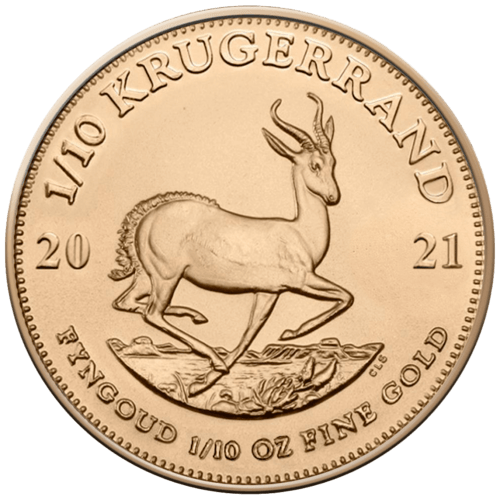Gold coins - this explains the different colors
The colors of gold coins: Why are they sometimes different?
You may have noticed that not all gold co ins are exactly the same color. Contrary to popular belief, however, this has nothing to do with the fact that some gold coins are counterfeit or dirty. In fact, there are two main reasons why not all gold coins have the same color. We would like to elaborate on these reasons in our article.
Gold coins in different colors: no need to worry
- Gold coins in different colors: no reason to worry
- The color of gold: different color variations in the precious metal
- Main reason 1: The alloy of the gold coins
- Main reason 2: Storage or custody as another influencing factor
- Conclusion to the different colors with gold coins
Some people are not aware in detail that coins made of gold can have different color variations. A gold coin does not always appear in the familiar and typical yellow gold, but can alternatively have a white, gray, green or even blue tint.
Nevertheless, some investors are put off when they see that a gold coin just does not have the typical gold tone. Questions then arise and sometimes customers even suspect a counterfeit behind the coins. That this is not the case in the vast majority of cases is due to three main reasons, namely:
- Different alloys (composition of the materials)
- Storage of the coins
- Influence materials during storage
First, we would now like to give you an overview of what colors gold can have in principle.
The color of gold: different color variations in the precious metal
Probably the best-known gold color, which also by far the most investors associate with gold coins, is the so-called yellow gold. This color also says something about the purity of the gold. The more intense the yellow gold color, the higher the purity grade. For this reason, for example, gold coins with a purity of 99% (24 carat) are deep yellow gold in color. In addition, yellow gold is used, among other things, in the vast majority in the field of jewelry. However, gold bars and gold coins are also mainly yellow-gold in color due to their mostly high purity.

White gold is also a quite typical and well-known color variant of gold. White gold is especially popular for jewelry such as rings or necklaces. The whitish color cast comes about because the alloy is not only made of pure gold, but one or more of the following materials are also added:
- Nickel
- Silver
- Manganese
- Palladium
In addition to yellow gold and white gold, gold can have other color tones, because it gives some other alloys. You can see these color variations partly with the corresponding alloy and the usage from the following table:
| Gold color | Alloy | Usage |
| Yellow gold | 99% pure gold | Bars, coins, jewelry |
| White gold | Gold + nickel, manganese, silver, palladium | Jewelry like rings or brooches |
| Red and pink gold | Gold + copper, possibly zinc and silver | Jewelry, popular among others in Russia 19th c. |
| Gold-gray | Yellow gold + palladium o. silver, manganese, copper | Jewelry with modern design |
| Green gold | Gold + silver possibly + cadmium | Jewelry already in antiquity |
| Blue gold | Yellow gold + gallium or indium | relatively rare, little for jewelry |
| Purple gold | Gold + certain aluminum | Details of jewels |
| Black gold | Electroplating with a rhodium or ruthenium patina | more often used as jewelry |
The pink or red cast on some gold coins comes from the addition of copper. For example, if it is 18 karat rose gold, the alloy is composed of 75 percent gold and 25 percent copper. Alternatively, the alloy can also consist of 75 percent gold, 20 percent copper and 5 percent silver. In the case of green gold, on the other hand, cadmium in particular contributes to this typical color, for example, with a share of 4 percent. In addition, the alloy usually contains 75 percent gold, 15 percent silver and 6 percent copper.
Main reason 1: The alloy of the gold coins
You can already guess one main reason for the partially different colors of gold coins based on our previous section, namely the different alloys. In most gold coins, at least in modern times, as well as in almost all gold bars, the alloy consists of only one material, namely gold. Consequently, these coins and bars have a fineness of 999/1000. Curiously, however, this does not apply to one of the world's most famous gold coins of all: the Krugerrand.
As a rule, the Krugerrand does not have a typical gold color, but instead has a somewhat reddish appearance. The cause is an admixture of copper. This results in the Krugerrand having only 91.66 percent fine gold. The remaining 38 percent or so consists of copper. The reason for this admixture is that the coins have a higher strength due to the addition of the copper.

Since with the creativity of the alloys - not necessarily with coins, but for example with jewelry hardly borders are set, there is gold still in numerous further colors, than those in the previous section mentioned. Thus, countless gradations exist, for example, of red gold, green gold or white and blue gold. However, more than 95 percent of all gold coins have either the color golden yellow or - as for example with the Krugerrand - red gold.
Main reason 2: Storage or safekeeping as a further influencing factor
Besides the different alloys, there is another reason why some gold coins have a different hue than very similar or even identical gold coins. This applies, for example, to somewhat older Krugerrand coins. Here there is sometimes even doubt about the authenticity, because just in a not 100 percent proper storage of the typical red tint may have "changed" into a slightly different color variant.
The reason in this case is that the copper contained in the alloy typical of the Krugerrand can react chemically. This reaction due to storage can even significantly affect the color of the gold coins. In many cases, therefore, there is a lightening of the red color that is so typical of the Krugerrand coin.
In summary, within storage, it is mainly the following three causes that can cause the hue of gold coins - for example, the Krugerrand - to change:
- Chemical reaction due to storage
- Influence of plasticizers
- Improper cleaning attempts
The influence of plasticizers, which are contained for example in plastic, which is often used for the storage of the coins in collector's albums, leads accordingly to a change of the color tone. The same applies to improper cleaning attempts, which not infrequently lead to a certain bleaching effect. The previously described change in color tone due to the influence of plasticizers and other factors is known in the trade as selective corrosion.

What is important to know for you as an investor and collector is that the change in color has no negative impact on the value of your coin. Furthermore, if the color is not 100 percent as it was, for example, at the time of purchase, it is by no means a sign of possible counterfeiting. So, a coin that is not pure yellow gold need not give any reason to doubt its authenticity.
Conclusion about the different colors of gold coins
In our article, you learned about the reasons why the colors of gold coins can differ. This is not only true for different coins made of gold. Even two gold coins of the same kind, for example two Krugerrand coins, can have different shades of color due to the difference in storage and how they are kept over time. So you don't have to worry at all that a coin might be a fake just because the hue is slightly different from the "standard".





